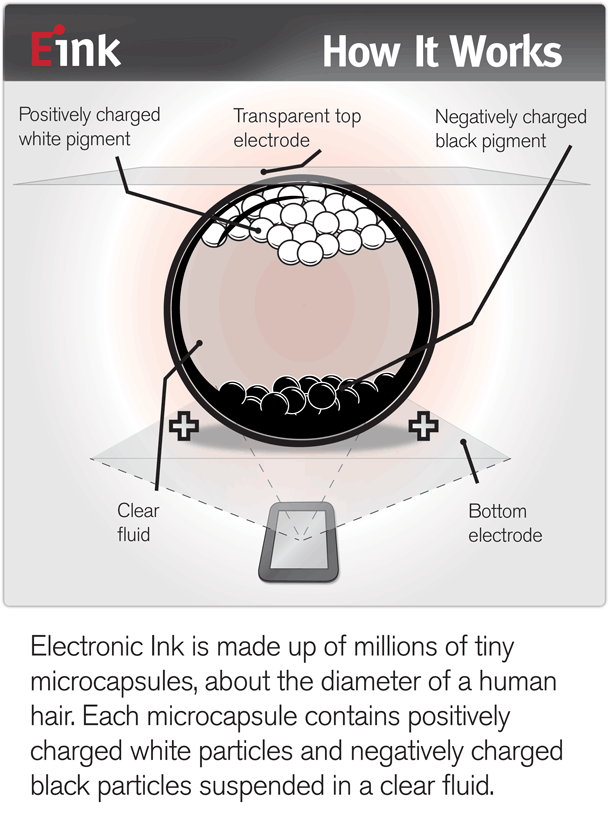How does a newspaper display shades of grey? They don't have 10000 different colours ink do they?
Get a magnifying glass and see: They put black dots in groups, many dots are dark, few dots are light.
That's exactly how this works. One such bubble can only be black or white, but because there's 100's of them in a square cm they can turn on only a few to get greyscales. In older e-Ink displays you could still see that if you looked up closely. Probably in the cheaper types still can. The grey background is just a mess of more and less dense black dots if you put your nose right up to the screen of a lower resolution one.
Further the system works pretty much like it is displayed in the animation. Much like a pre-charged electret microphone the bubble and plates are very well isolated, so that a charge cannot easily escape, so are the pigment granules. Probably some form of epoxy micro-droplets with charged particles inside, so that the particles can't mingle and neutralise.
That way an e-Ink screen can stay "charged" for years, or possibly decades, before it starts to fade and eventually stops working.
Because you only need a little current when changing a pixel to change the charge on the plate, the display can work powerless as long as the picture doesn't change for days, weeks or in higher end models even years.
EDIT:
Of course where I mention "one bubble" it should be "one set of electrodes". One bubble can have 1, 2 or 4 electrode pairs I believe, the animation shows it for 2 electrode sets per bubble as well. So by having 4 top and 4 bottom electrodes a bubble itself could contain 4 black/white pixels, making it a 4-level grey-scale pixel in itself. But one set of electrodes can always only make black or white, nothing in between.

